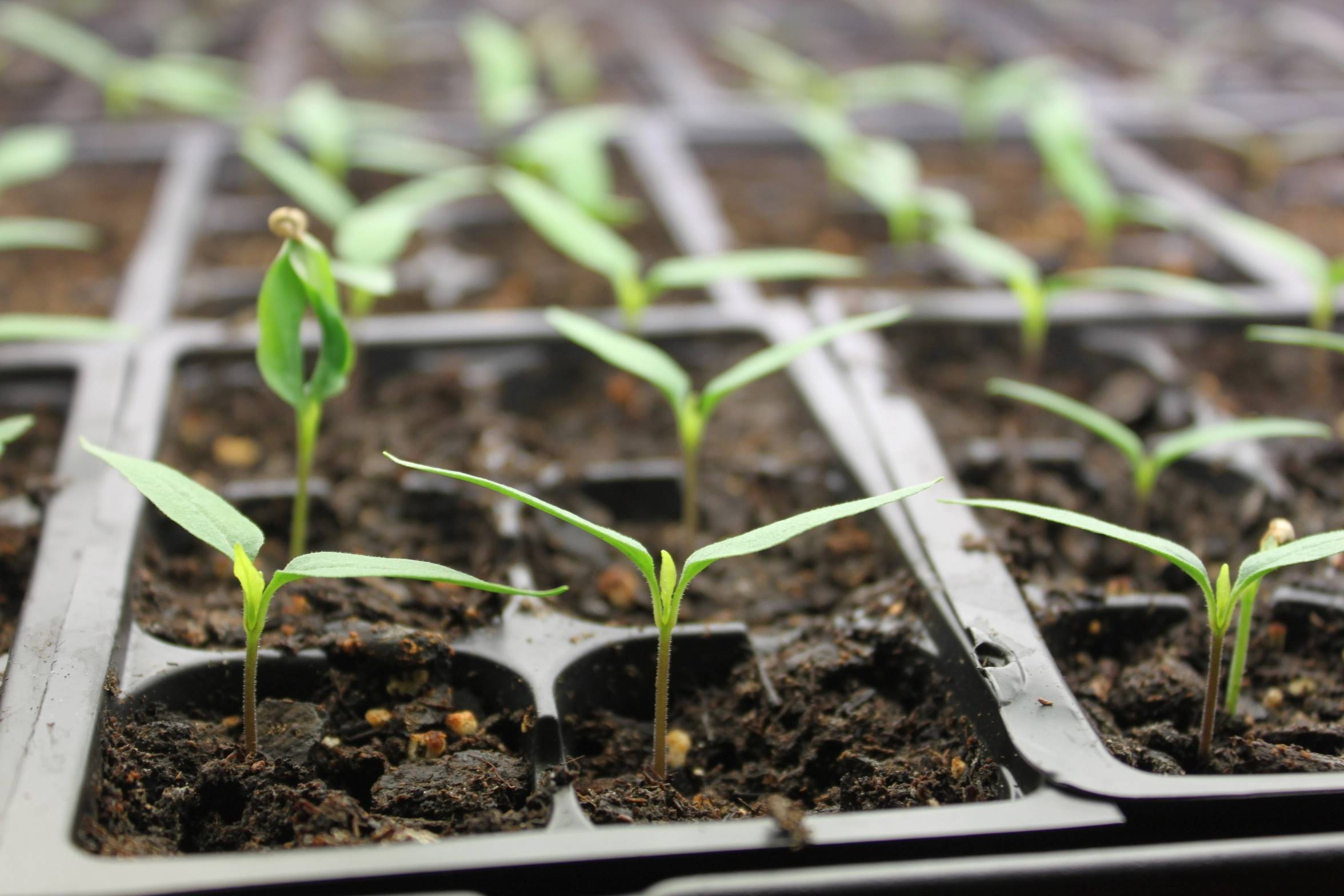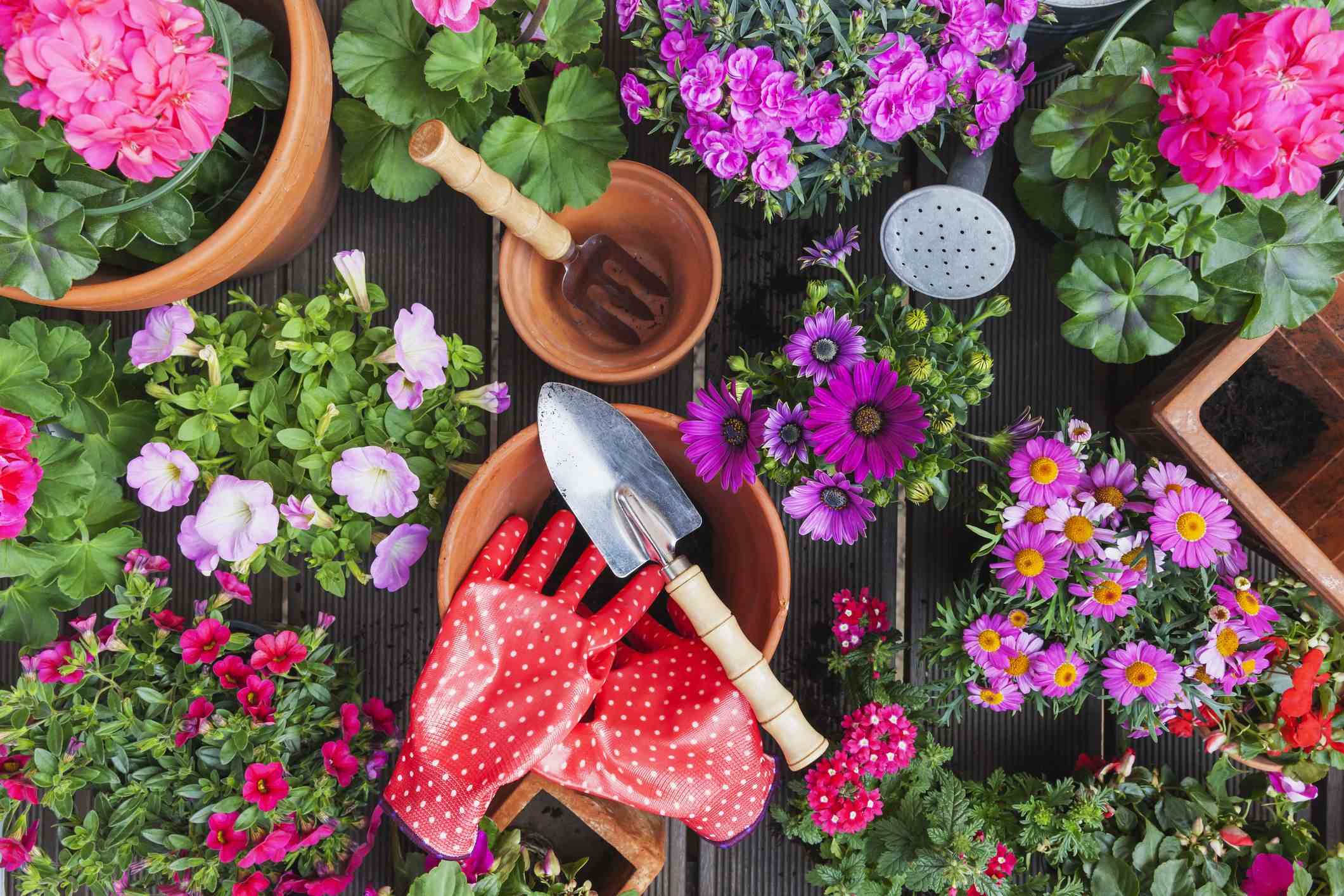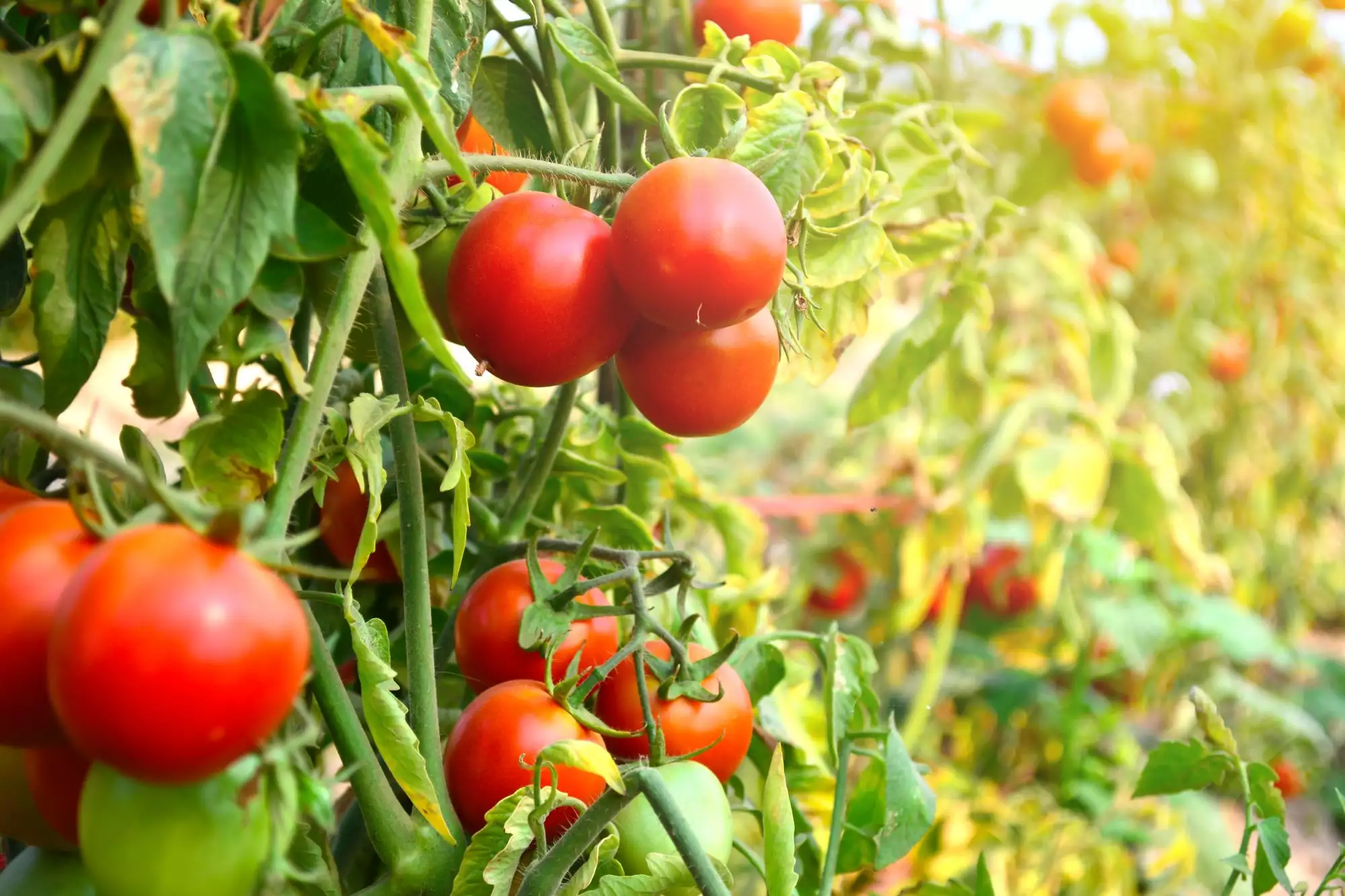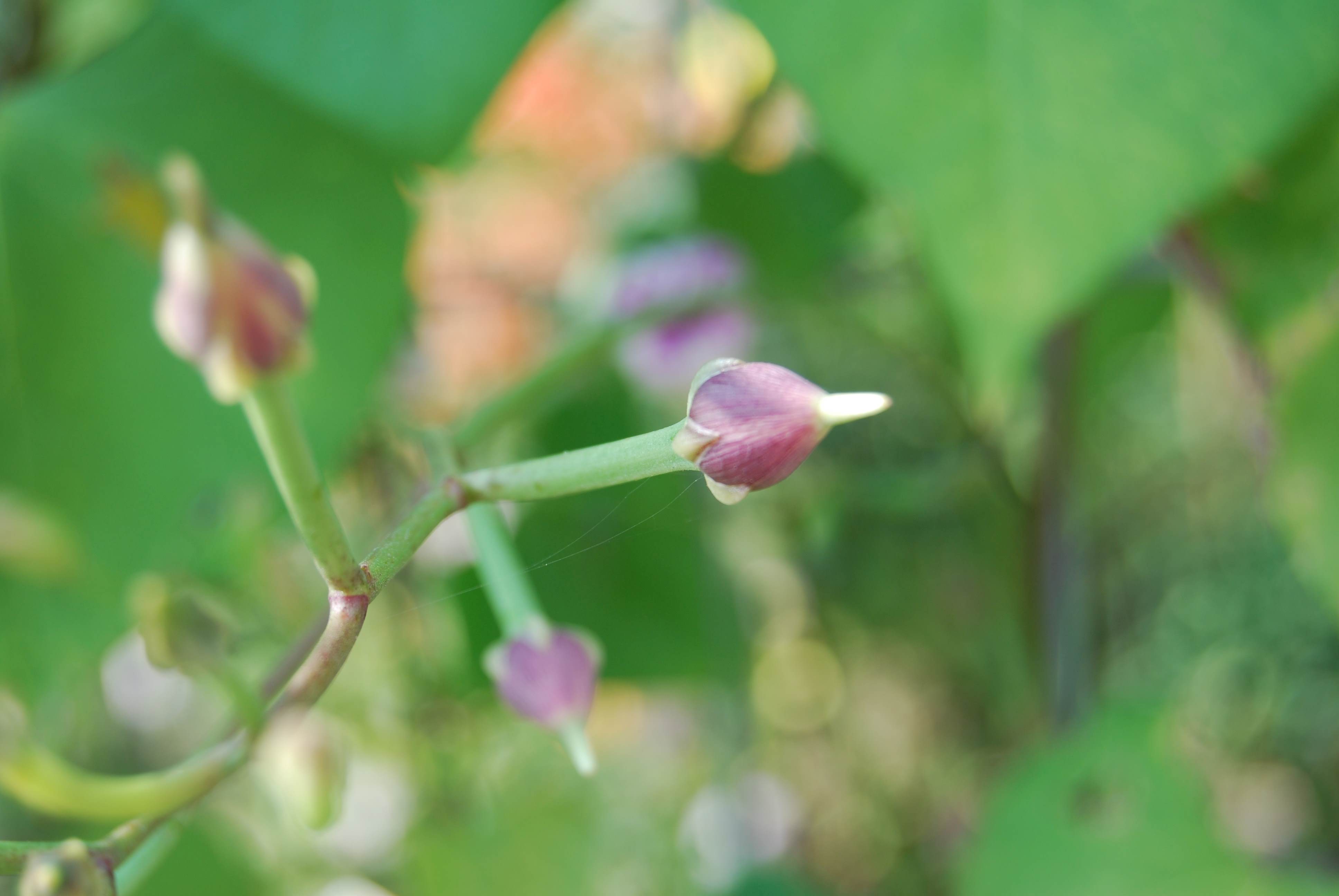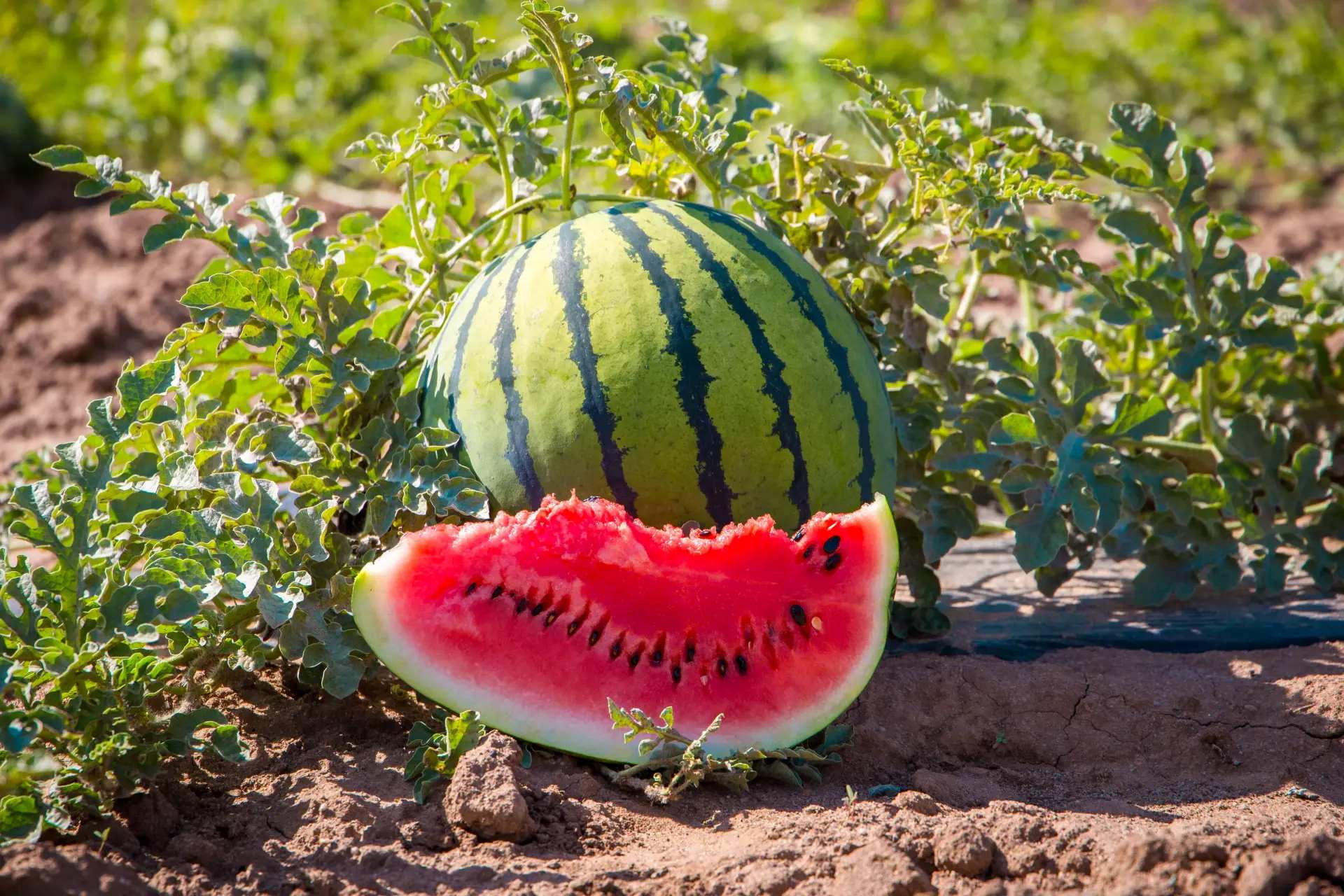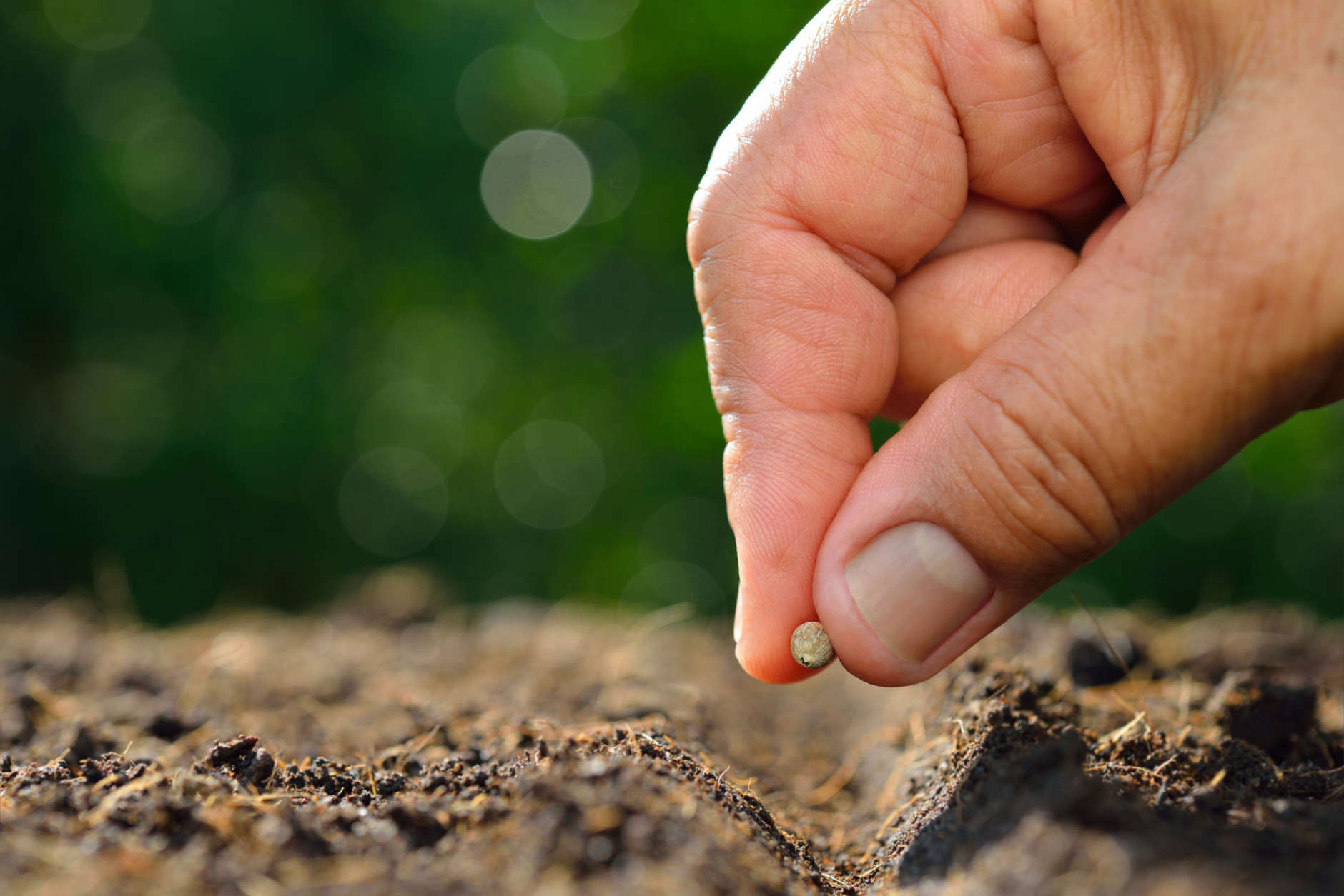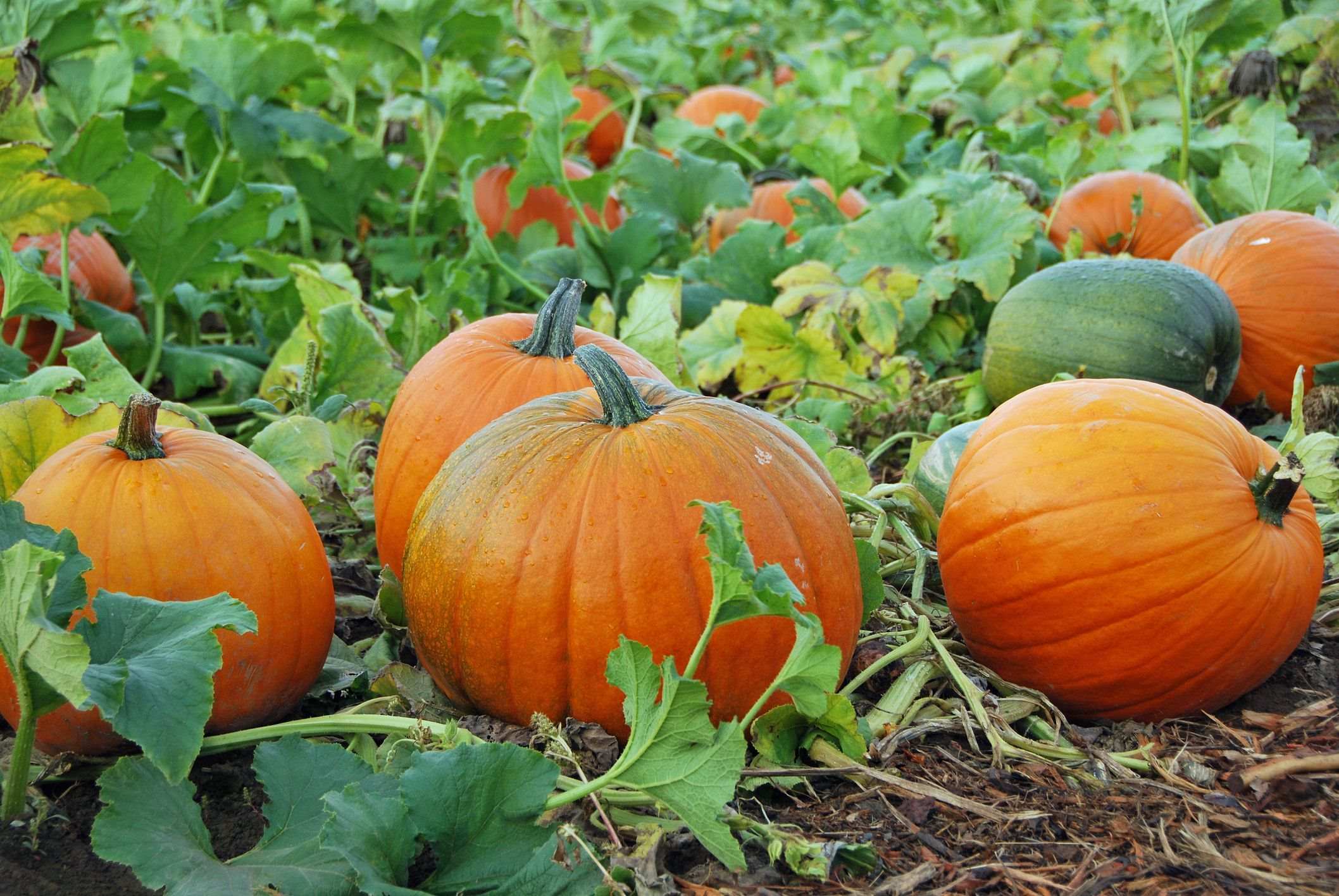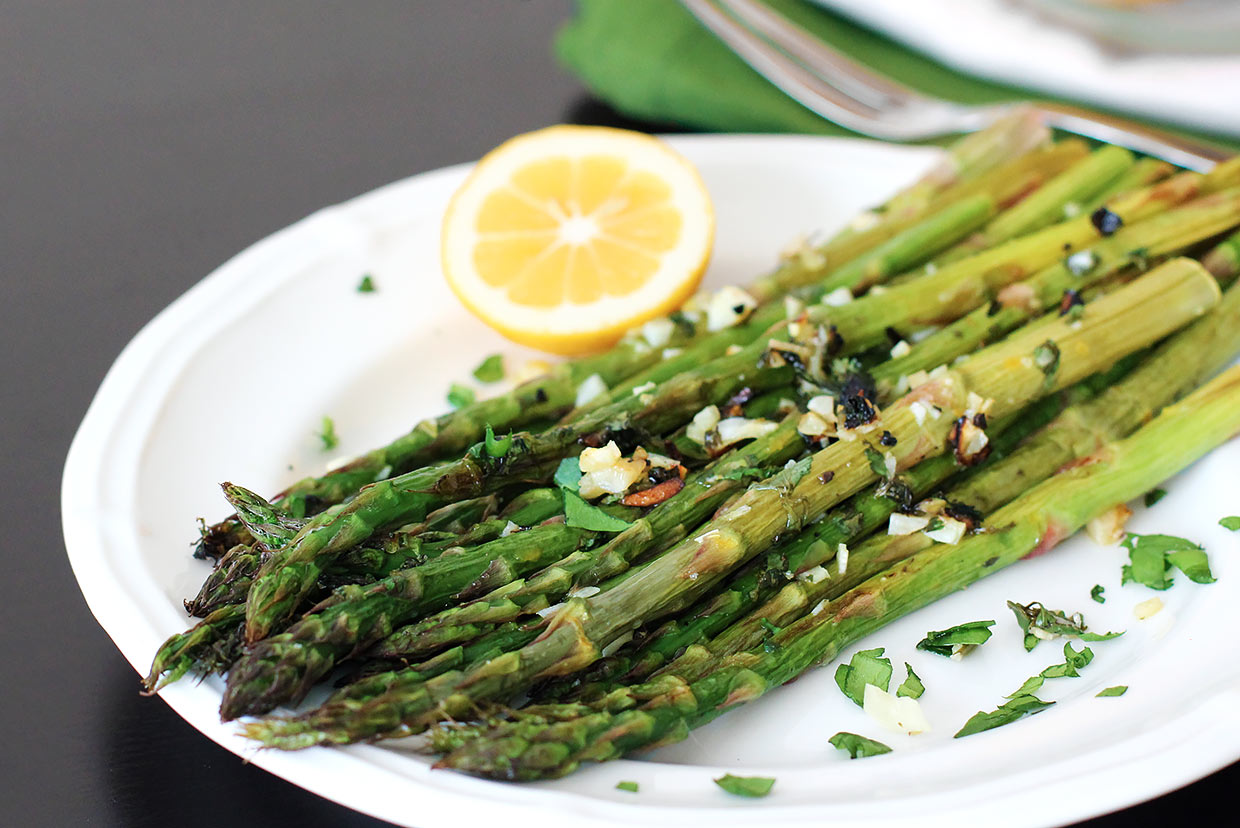Home>Types of Gardening>Edible Gardening>When To Plant Asparagus Seeds
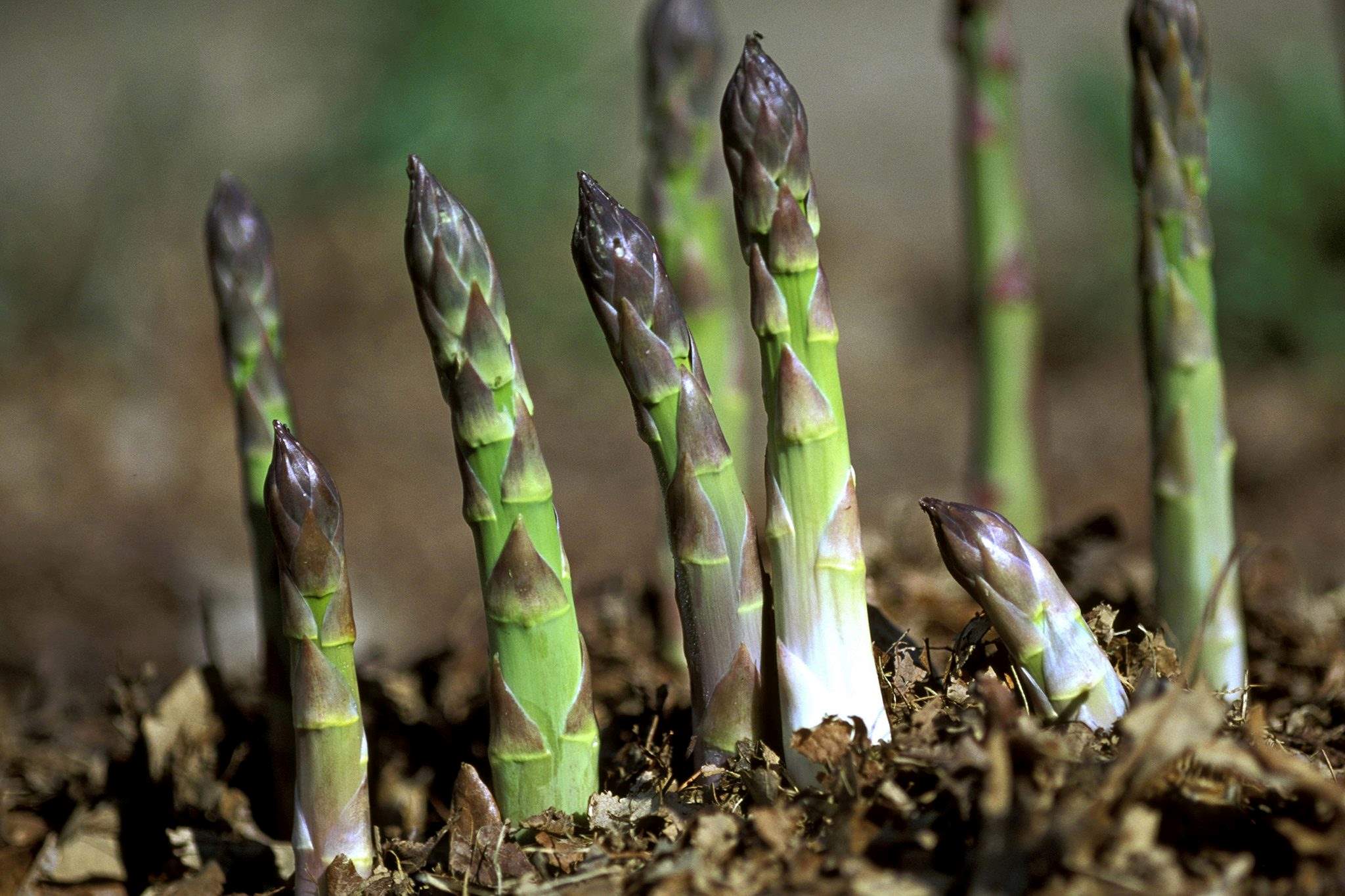

Edible Gardening
When To Plant Asparagus Seeds
Modified: January 22, 2024
Discover the best time to plant asparagus seeds in your edible garden. Learn expert tips and techniques for successful asparagus cultivation.
(Many of the links in this article redirect to a specific reviewed product. Your purchase of these products through affiliate links helps to generate commission for Chicagolandgardening.com, at no extra cost. Learn more)
Table of Contents
Introduction
Welcome to the world of edible gardening! If you’re looking to enhance your green thumb and enjoy the fruits of your labor, growing your own vegetables is a rewarding and fulfilling experience. One plant that deserves a spot in your garden is asparagus. Asparagus is not only a versatile and delicious vegetable, but it is also packed with essential vitamins and minerals.
Before you embark on your journey of planting asparagus seeds, it’s important to understand the basics. Asparagus seeds are the starting point for growing this perennial vegetable. Unlike other vegetables that are typically grown from transplants or started from seeds, asparagus is best grown from seeds. This allows for a stronger root system, resulting in healthier plants that can produce abundant harvests for years to come.
Before you get your hands dirty, there are a few factors to consider. Asparagus is a space-intensive plant, requiring a dedicated area in your garden. It’s also important to assess the soil conditions, as asparagus thrives in well-drained, fertile soil. Additionally, proper timing is crucial when it comes to planting asparagus seeds. Choosing the right time to sow the seeds will ensure optimal growth and a bountiful harvest.
In this article, we will guide you through the process of planting asparagus seeds, from selecting the ideal time to harvest your first succulent spears. So, grab your gardening tools and let’s dive into the world of asparagus gardening!
Understanding Asparagus Seeds
Before diving into the planting process, it’s important to have a solid understanding of asparagus seeds. Asparagus seeds may seem small and unassuming, but they hold the potential to grow into robust plants that will produce delicious spears for years to come.
Asparagus seeds are typically small and round in shape, resembling tiny pebbles. They come in a variety of colors, including green, brown, and black. While the color of the seeds doesn’t affect their viability or quality, it can be an interesting characteristic to observe.
An important thing to note is that asparagus seeds have a relatively low germination rate compared to other vegetable seeds. On average, only about 50% to 70% of the seeds will successfully germinate. This is why it’s recommended to sow more seeds than you actually need, allowing for a higher chance of obtaining a substantial harvest.
Unlike some fast-growing vegetables, asparagus is a perennial plant, meaning it can live for multiple years. Asparagus seeds are the starting point for establishing a healthy and productive asparagus bed. When you plant the seeds, they will grow into seedlings, which will eventually develop into mature plants that produce the iconic edible spears.
It’s worth noting that asparagus seeds require a bit of patience. Unlike planting other vegetables that can provide a quick harvest, asparagus takes time to establish itself. After planting the seeds, it can take anywhere from two to three years before you can begin harvesting a significant amount of asparagus. However, the wait is well worth it, as asparagus plants can continue to produce for up to two decades.
Now that you have a better understanding of asparagus seeds, it’s time to move on to the next steps in the planting process. In the following sections, we’ll explore the best time to plant asparagus seeds and how to prepare the soil for optimal growth. So let’s roll up our sleeves and get started!
Factors to Consider Before Planting
Before you start planting your asparagus seeds, there are a few important factors to consider. Taking the time to evaluate these factors will help ensure the success and longevity of your asparagus bed.
First and foremost, you need to assess the space requirements of asparagus. Asparagus is a space-intensive plant that needs enough room to grow and spread out. Each asparagus plant can occupy a space of about 4 to 5 square feet, so make sure you have enough space available in your garden for the number of plants you plan to grow. It’s also important to note that asparagus plants can produce spears for many years, so choose a location where they can remain undisturbed.
The next factor to consider is the soil conditions. Asparagus thrives in well-drained, fertile soil. The pH level of the soil should ideally be between 6.0 and 7.0. If your soil is too acidic, you can add lime to raise the pH level. On the other hand, if it’s too alkaline, you can amend it with elemental sulfur. Conduct a soil test prior to planting to ensure the soil is suitable for asparagus growth.
Sunlight is another crucial factor for asparagus plants. Make sure you choose a location in your garden that receives at least 6 to 8 hours of direct sunlight daily. Asparagus plants require ample sunlight to photosynthesize and produce robust spears. Avoid areas that are shaded or prone to excessive shade from nearby trees or buildings.
Proper drainage is essential for the health of your asparagus plants. Asparagus roots do not tolerate waterlogged conditions, as this can lead to root rot. Ensure that the planting site has good drainage and that the soil does not become waterlogged after heavy rain or irrigation. If your soil has poor drainage, consider amending it with organic matter or creating raised beds to improve the drainage.
Last but not least, consider your climate and the frost dates in your region. Asparagus is a cool-season crop that prefers mild temperatures. It is best to plant asparagus seeds in early spring, when the soil temperature reaches around 50 to 55°F (10 to 13°C). Planting too early when the soil is still cold can result in poor germination and stunted growth. Conversely, planting too late in the season may not give the plants enough time to establish themselves before the winter frost.
By carefully considering these factors before planting, you can set up your asparagus bed for success. In the next section, we will dive into the best time to plant asparagus seeds to ensure optimal growth and a bountiful harvest.
Best Time to Plant Asparagus Seeds
The timing of planting asparagus seeds plays a crucial role in the success of your asparagus bed. Asparagus is a cool-season crop that prefers mild temperatures for optimal growth. Choosing the right time to sow the seeds will ensure that they germinate successfully and establish strong, healthy plants.
The best time to plant asparagus seeds is in early spring, when the soil temperature reaches around 50 to 55°F (10 to 13°C). It’s important to wait until the soil has warmed up sufficiently before planting, as cold soil can hinder germination and slow down the growth of the seedlings.
Before planting, take note of the average last frost date in your region. Asparagus spears are susceptible to frost damage, so you want to avoid planting too early and risking exposure to late frosts. It’s best to wait until after the last frost has passed before sowing your asparagus seeds.
In most regions, early to mid-spring is the ideal time to plant asparagus seeds. This timeframe allows the seeds to germinate and the seedlings to establish themselves before the warmer summer months. It’s important to give the seedlings enough time to develop a strong root system before they enter their dormant phase in winter.
If you’re in a region with a shorter growing season or colder temperatures, you may consider starting your asparagus seeds indoors a few weeks before the last frost date. This will give the seeds a head start and allow the seedlings to be transplanted into the garden when the soil is warm enough.
Remember, asparagus is a perennial plant, and the seeds you plant will eventually grow into long-lived plants that can continue to produce for years. Taking the time to plant at the right moment will ensure the long-term success of your asparagus bed.
Now that you know the best time to plant asparagus seeds, let’s move on to preparing the soil to provide the optimal growing conditions for your asparagus seedlings.
Preparing the Soil for Planting
Preparing the soil is a crucial step in setting up your asparagus bed for success. Asparagus thrives in well-drained, fertile soil, so it’s important to ensure the right conditions before planting your seeds. By taking the time to prepare the soil properly, you’ll provide the optimal growing environment for your asparagus seedlings.
The first step in soil preparation is removing any existing vegetation or weeds from the planting area. Clear the area of grass, weeds, and rocks to create a clean and blank canvas for your asparagus plants. This will prevent competition for nutrients and space, allowing your asparagus plants to grow unhindered.
Next, loosen the soil to a depth of around 12 to 18 inches (30 to 45 centimeters). This will help the asparagus roots penetrate deep into the soil, promoting healthy growth and stability. You can use a garden fork or tiller to break up compacted soil and create a loose, friable texture.
After loosening the soil, incorporate organic matter such as compost or well-rotted manure. Adding organic matter improves soil structure, increases water retention, and enhances nutrient availability for your asparagus plants. Spread a layer of organic matter over the planting area and mix it into the soil thoroughly, ensuring even distribution.
Once the soil is prepared and enriched with organic matter, it’s essential to assess the pH level. Asparagus prefers a slightly acidic to neutral pH, ranging from 6.0 to 7.0. You can test the pH level of your soil using a home soil testing kit or by sending a soil sample to a local agricultural extension office. If the pH is lower than the desired range, you can add lime to raise it. On the other hand, if the pH is higher, you can amend the soil with elemental sulfur to lower it.
Lastly, it’s important to ensure proper drainage in your asparagus bed. Asparagus roots can rot if they are sitting in waterlogged soil. If your soil has poor drainage, consider creating raised beds or mounds to improve water flow. Alternatively, you can mix sand or perlite into the soil to improve drainage.
By preparing the soil properly, you create the optimal growing conditions for your asparagus seedlings. The enriched soil, proper pH level, and good drainage will support healthy growth and ensure that your asparagus plants thrive. With the soil ready, it’s time to move on to the exciting part—sowing the asparagus seeds and watching them grow!
Planting Asparagus Seeds
Now that you have prepared the soil, it’s time to sow your precious asparagus seeds. Proper planting techniques will ensure successful germination and the establishment of strong, healthy seedlings. Let’s dive into the steps involved in planting asparagus seeds:
- Sow the seeds: Create furrows or trenches in the prepared soil, with a depth of about 1 to 2 inches (2.5 to 5 centimeters). Space the furrows about 12 to 18 inches (30 to 45 centimeters) apart to allow enough room for the asparagus plants to spread. Place the asparagus seeds at a spacing of about 2 inches (5 centimeters) within the furrows.
- Cover and water: Gently cover the seeds with soil, ensuring that they are buried to a depth of about half an inch (1.25 centimeters). Lightly firm down the soil to ensure good seed-to-soil contact. After planting, water the seedbed thoroughly to eliminate any air pockets and to provide moisture for germination.
- Monitor and maintain: Keep the soil consistently moist but not waterlogged during the germination phase. This can typically take around 10 to 14 days, but it may vary depending on soil temperature and other factors. Be patient and resist the temptation to overwater, as it could lead to rotting of the seeds.
- Thin out seedlings: Once the seedlings start to emerge and grow, thin them out to allow ample space for each plant to develop. Thin the seedlings to a spacing of about 6 to 8 inches (15 to 20 centimeters) apart. This will give the remaining plants enough room to develop strong root systems and thrive.
- Provide support: As the asparagus plants grow, they will require support to avoid them bending or breaking under their own weight. Place stakes or a trellis system near the plants to provide support for the tall foliage.
Remember, asparagus is a crop that requires patience. While other vegetables may provide quick gratification, asparagus takes time to establish and produce a significant harvest. However, the wait is worth it, as asparagus can be a perennial source of delicious spears for many years to come.
With the asparagus seeds planted and the seedlings starting to grow, it’s essential to provide proper care and maintenance to ensure their healthy development. In the next section, we will explore the necessary steps for caring for your asparagus seedlings.
Caring for Asparagus Seedlings
Once your asparagus seedlings have emerged and started to grow, it’s crucial to provide them with proper care to promote healthy development and ensure a successful harvest. Here are some essential tips for caring for your asparagus seedlings:
- Watering: Asparagus seedlings require consistent moisture to thrive. Water the plants regularly, aiming to keep the soil evenly moist. Avoid overwatering, as this can lead to root rot, but also ensure that the plants do not suffer from drought stress.
- Weed control: Keep the planting area free from weeds that can compete with the asparagus seedlings for nutrients and moisture. Regularly remove any weeds by hand or use a shallow hoe to prevent them from establishing and overtaking the area.
- Fertilization: Asparagus plants benefit from regular fertilization to ensure they receive the necessary nutrients. In early spring, before growth starts, apply a balanced organic fertilizer or a slow-release fertilizer specifically formulated for asparagus. Follow the package instructions for application rates, ensuring not to over-fertilize, as this can lead to excessive foliage growth and weak spears.
- Mulching: Apply a layer of organic mulch, such as straw or wood chips, around the asparagus plants. Mulching helps conserve moisture, suppress weed growth, and regulate soil temperature. It also provides a barrier between the spears and the soil, reducing the risk of soil-borne diseases.
- Protecting from pests: Asparagus can attract certain pests, such as beetles and aphids. Monitor your plants regularly and take action at the first sign of pest infestation. You can use organic pest control methods like handpicking pests or applying insecticidal soap if necessary.
- Allowing for fern growth: Asparagus plants produce tall, fern-like foliage during the growing season. This foliage is essential for the plant’s energy production and storage. Avoid cutting or removing the ferns until they turn yellow or brown in the late fall. The ferns will gather energy to support the following year’s growth and produce spears.
By providing proper care and maintenance to your asparagus seedlings, you are setting the foundation for a bountiful harvest. Remember to be patient, as asparagus takes a few years to fully establish and produce a significant yield. With consistent care, you will soon be rewarded with delicious, homegrown asparagus spears.
Now that you know how to care for your asparagus seedlings, let’s move on to the next step—harvesting your homegrown asparagus!
Harvesting Asparagus
Harvesting asparagus is an exciting and rewarding moment for any gardener. After patiently nurturing your asparagus plants, you can finally enjoy the delicious and tender spears. When it comes to harvesting asparagus, there are a few key guidelines to keep in mind:
- Patience is key: Asparagus plants typically take two to three years to reach maturity and produce a significant harvest. It’s important to resist the temptation to harvest the spears too early. Allow the plants to establish a strong root system and grow for at least two seasons before harvesting.
- Harvesting timeline: Once your asparagus plants have reached the appropriate maturity, you can start harvesting spears. The typical harvest season for asparagus is in the spring, usually lasting for about 6 to 8 weeks. Harvesting can begin when the spears reach a height of around 6 to 8 inches (15 to 20 centimeters) and have a diameter similar to that of a pencil.
- Harvesting technique: To harvest asparagus, hold the spear near its base and cut it slightly below the soil surface using a sharp knife or garden shears. Avoid damaging the surrounding crowns or emerging spears. Harvest the largest and most mature spears first, as they are the ones that will offer the best flavor and texture.
- Regular harvesting: During the harvest season, check your asparagus bed regularly and harvest spears every 2 to 4 days. This encourages continued production by allowing the plants to send up new spears. Don’t let the spears grow too tall before harvesting, as they can become woody and tough.
- End of the harvest season: Towards the end of the harvest season, stop harvesting the spears and allow them to grow freely. This allows the fern-like foliage to develop and gather energy for next year’s growth. The foliage will also add beauty to your garden and serve as a reminder of the delicious harvests to come.
Keep in mind that asparagus spears are best enjoyed when freshly harvested. If you can’t eat them immediately, store them in the refrigerator with the cut ends wrapped in a damp paper towel and placed in a plastic bag. They can stay fresh for up to a week, but it is always best to enjoy them as soon as possible.
With proper harvesting techniques, you can continue to enjoy delicious asparagus from your garden for many years. Just remember to be patient, harvest at the right time, and savor the flavors of your homegrown spears.
Now that you have learned how to harvest asparagus, it’s time to reflect on the valuable knowledge you have gained in this comprehensive guide to edible gardening. Happy gardening and enjoy your bountiful harvests!
Conclusion
Congratulations! You have now completed a comprehensive journey through the world of asparagus gardening. From understanding asparagus seeds to preparing the soil, planting, caring for the seedlings, and finally harvesting, you have gained valuable knowledge and insights to embark on a successful edible gardening adventure.
Asparagus is a versatile and nutritious vegetable that can bring joy and satisfaction to your plate. By carefully considering factors such as space requirements, soil conditions, and sunlight exposure, you can create an ideal environment for your asparagus plants to flourish.
Remember, asparagus is a plant that requires patience. It takes time for the seeds to germinate, seedlings to grow, and mature plants to produce significant harvests. But the wait is worth it, as asparagus is highly rewarding and can continue to provide delicious spears for years to come.
Throughout this guide, you’ve learned about proper planting techniques, caring for the seedlings, and the best practices for harvesting fresh asparagus spears. By applying these techniques and maintaining a vigilant eye for any potential issues, you can enjoy the bounty of your own homegrown asparagus.
Edible gardening is a journey of learning, experimenting, and enjoying the fruits of your labor. As you gain more experience, don’t hesitate to try different varieties of asparagus or explore other vegetables and herbs to add diversity to your garden.
Now armed with the knowledge you’ve acquired, it’s time to put your green thumb to work. Start by sourcing high-quality asparagus seeds, prepare your garden beds, and begin the process of sowing, caring, and harvesting. Soon enough, you’ll delight in the satisfaction of serving your loved ones a delicious meal featuring your own homegrown asparagus.
So, embrace the joys of edible gardening, dive into the world of asparagus cultivation, and let your garden become a haven of fresh, flavorful, and wholesome produce. Happy gardening!
